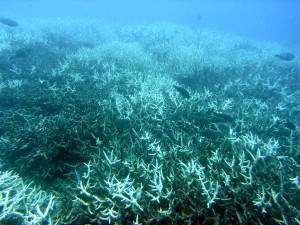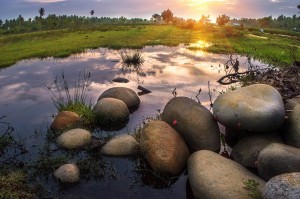Human induced global warming and climate change are affecting ecosystems every day. The survival of plants and animals in their natural habitats is increasingly under threat.
Thousands of species have already disappeared from the face of the earth, and there are thousands of others that are critically endangered and are facing extinction today, due to global warming.
Do you agree that humans are the primary cause of global warming? Please add your opinion in the comment section of our Facebook post.
We have analyzed some scientific data in one of our previous blogs to convince you that global warming is real. See our article, How to Convince your Friends that Climate Change is Real!
The next questions that come to our mind are, what are the consequences of global warming? Are we able to cope with it? What about the different species around the world?
You may be thinking that climate change is beyond our control and there is nothing we could do about it. However, you would be wrong if you think that. There are several things we could do to minimize our negative effects and carbon footprints on the globe. First, let’s look at how climate change impacts species around the globe.
Video Credits: Thinkport MPT
1. Species forced to move from natural habitats
As the global climate gets warmer, species that live in cooler climates will have to migrate to cooler regions or adapt to changes. This has been observed among many species of animals; they tend to move towards the poles or uphill, even when a slight warming of temperature occurs.
“Fish in the North Sea have been observed moving northwards too – fish stocks that used to be common around Cornwall have moved as far north as the Shetland and Orkney Islands.” – WWF – Species threatened by climate change
2. Loss of habitable conditions
Loss of habitable conditions for species is another major human-induced threat that’s causing animals to lose their natural homes and a place to raise their young ones. Each species of animal is adapted to their specific environmental conditions and a sudden change can have a tremendous effect.
Some species of plants are losing their natural growth cycle due to unseasonably warmer climates.

“Bleachedcoral” by Acropora at English Wikipedia. Licensed under CC BY-SA 3.0 via Wikimedia Commons.
It has also been observed that some flowering plants bloom earlier than usual in the spring, and some vegetation are growing in a different way than they should. This causes imbalances in nature, causing food shortages for the animals that depend on that vegetation, and eventually loss of species.
For example when the ocean temperature rises, even 1°C (1.8°F) above the summer maximum, some species get affected. “An example of this problem is Australia’s world-famous Great Barrier Reef. At around 2,000 kilometers (1,243 miles) long, it is the world’s largest reef. But in 2002, the reef experienced its worst-ever case of coral bleaching, with over 60% of the reef affected.” – greenpeace.org
Coral bleaching is when they lose their color and become lighter or completely white through either “expulsion or loss of algal pigmentation”. It can occur when the “conditions necessary to sustain the coral zooxanthellae, or the intracellular pigments, cannot be maintained”. Any imbalance in the environment of coral regions that affect the supply of this pigment, such as a rise in carbon dioxide or ammonia, may trigger this. – WikipediA
3. Impact on coastal and marine areas
Population growth and rising coastal civilization has put marine and coastal habitats under threat. Unplanned fishing, over-fishing as well as runoff chemicals from industries and agricultural practices which continuously pollute coastal areas, all deplete the coastal habitats and ecosystems.
Pollution, over-consumption of natural resources and land-use patterns contribute to global warming and eventually degrade marine habitats. This can lead to destruction of the species that rely on the coastal region resources to survive.
What can we do about it?
There are many things that can help the environment retain its natural state. We can all work together to reduce our impact on the globe, by using resources responsibly, minimizing carbon emissions and practicing sustainability in our agriculture, other types of industries and in our everyday lives.
Adopting sustainable habits and shifting towards greener eco-friendly products can significantly help reduce carbon footprint, save energy and reduce resource wastage. These are the only ways to ensure that all natural habitats around the globe stay undisturbed.
Conclusion

Image credit: saifulmulia,
Source Pixabay, License:: CC0 Public Domain
Thousands of species are becoming extinct and thousands of others are becoming critically endangered, due to our activities. These species lose their natural habitat, sources of food, water, and a safe place to raise young ones and eventually becoming extinct.
Mother Nature perfected ecosystems that have worked for millions of years, even before humans came into existence, which we are putting off-balance. Every element in nature is important for natural evolution, biodiversity and ecological balance.
Disturbing ecosystems can have far reaching impacts on the globe and consequences that will threaten our own existence.
Please share this article and spread awareness among your friends. We’d also love to hear from you, so please add your comments on this article on our Facebook Page.
We would also appreciate a few words from you so put down your thoughts about this article in the comment box below.
To get in touch with us, please click here to book a meeting with us.
Source: Environmental Professionals Network
Related articles and resources:
- Current Global Issue – 10 Most Endangered Species of Animals | Nourish The Planet
- The IUCN Red List of Threatened Species
- Red list 2013: threatened species across the regions of the world | News | The Guardian
- Climate Change Causes Habitat Loss and Species Extinction | Greenpeace East Asia
- The Importance Of Building And Maintaining Biodiversity Globally
- 5 Green Habits That Your Family Can Share With You
- 10 Green Habits To Adopt For A Greener Environment



